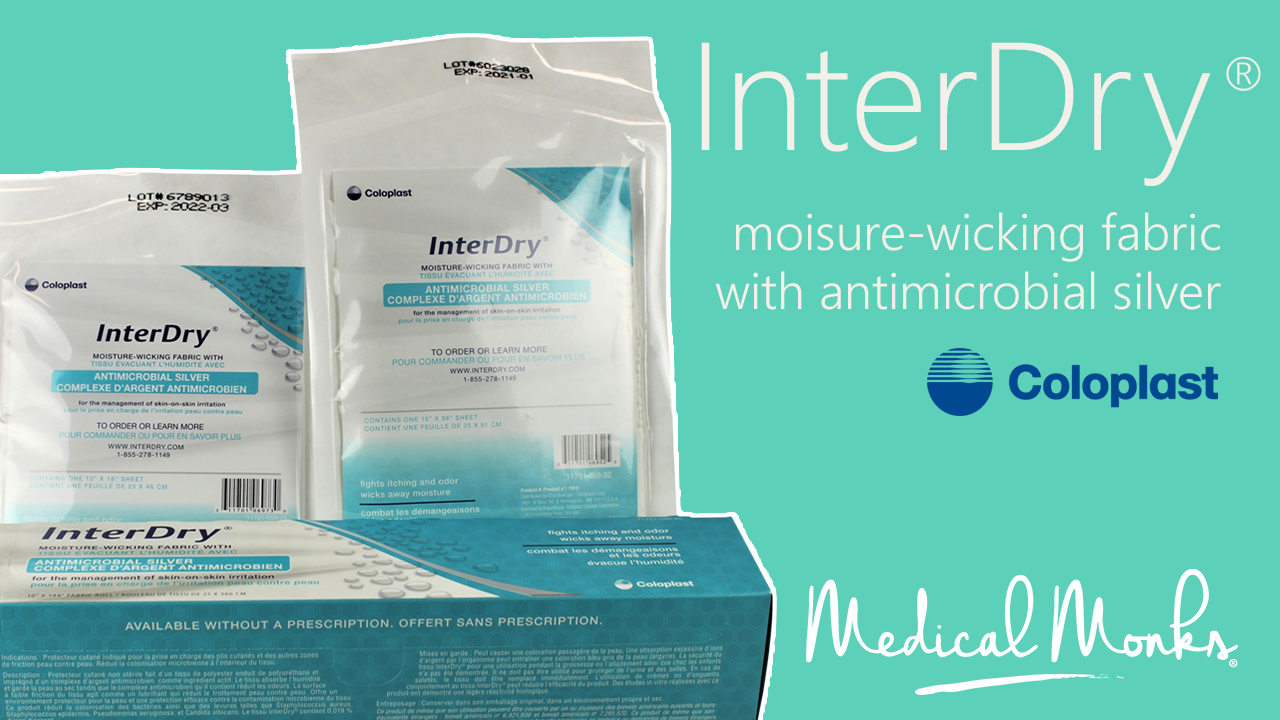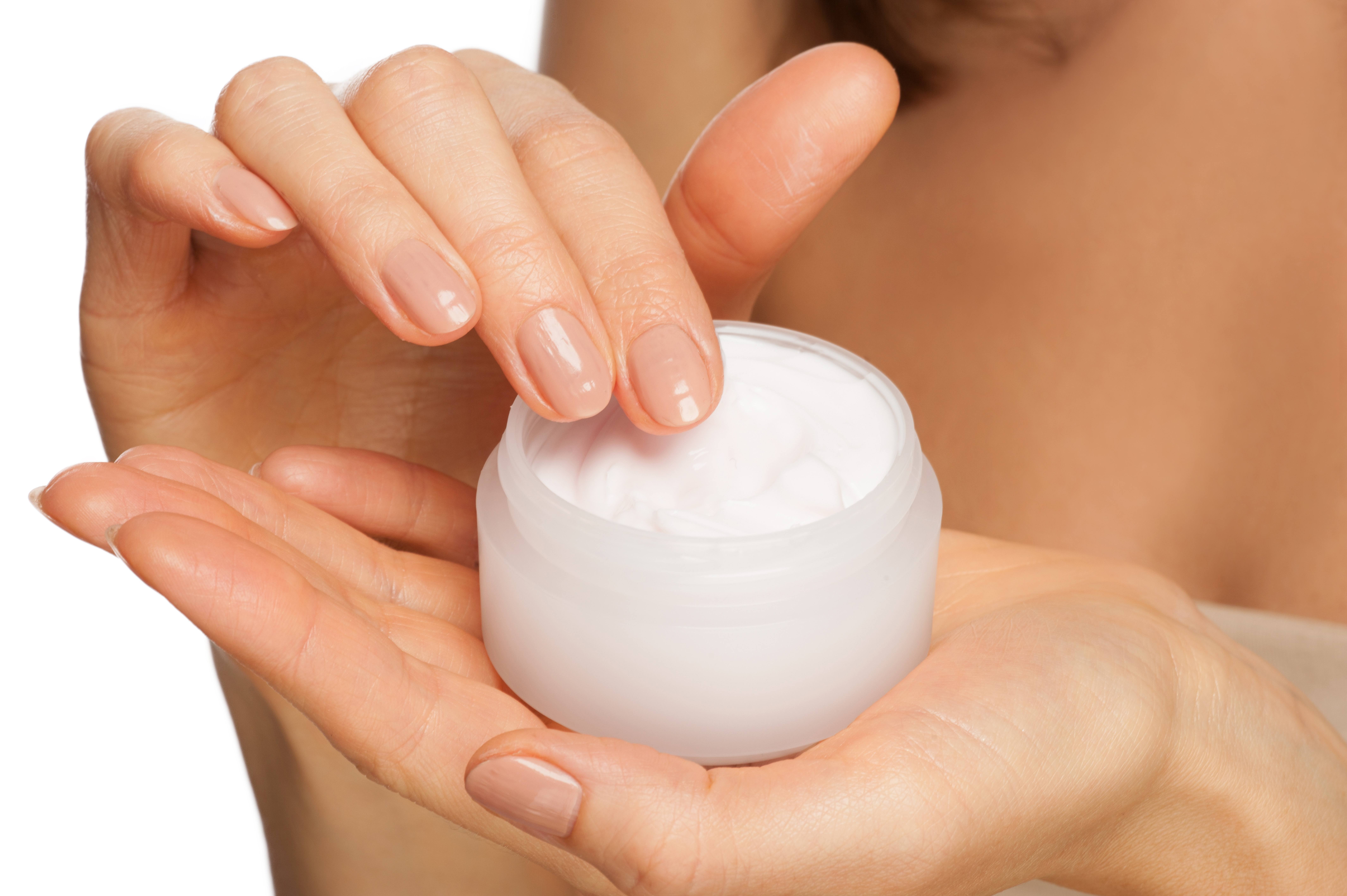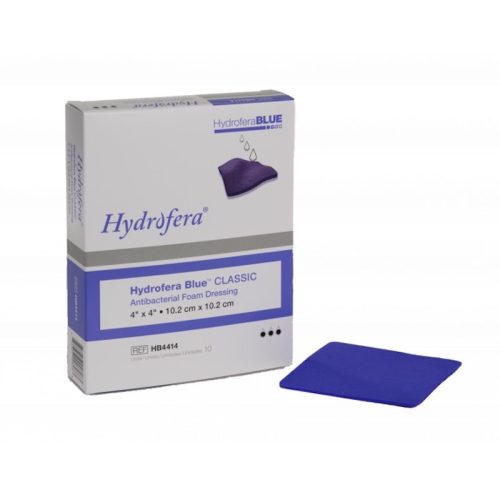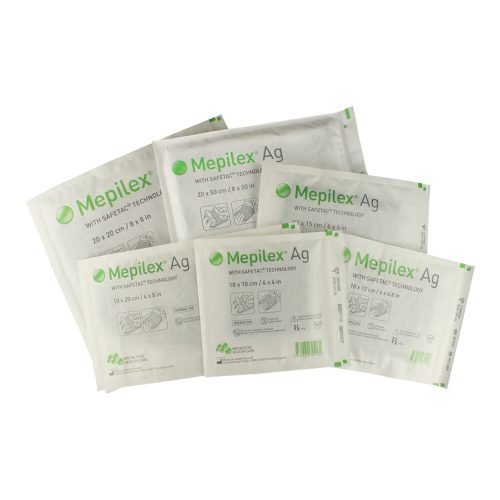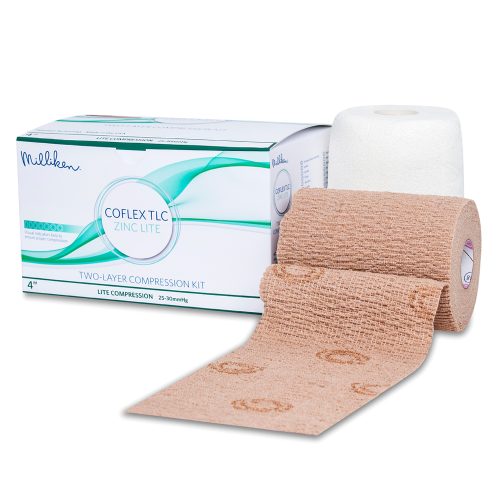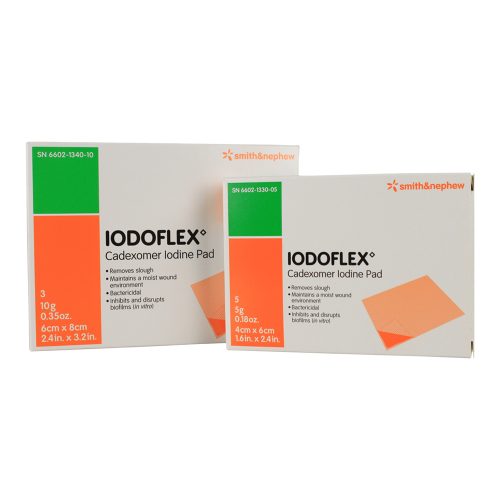Acute wounds are the cause of roughly 17.2 million hospital visits, on average, each year in the U.S. Moreover, about 6.5 million people (2.6% of Americans) deal with chronic wounds.
As wounds are an increasingly widespread problem, effective wound care is more important than ever. In this guide, we draw on the World Union of Wound Healing Societies’ consensus document to deepen our understanding of wound drainage, specifically.
With this resource, we aim to empower everyone to accurately interpret wound exudate, in order to better assess and treat wounds in your care.
Wound Drainage In Acute & Chronic Wounds (Overview)
The WUWHS defines “wound drainage” as an informal term for wound exudate.
The definition of “wound exudate” is:
“Exuded matter; especially the material composed of serum, fibrin, and white blood cells that escapes into a superficial lesion or area of inflammation.”
Using this definition, wound exudate isn’t inherently harmful. Certain types of wound exudate support the healing process by:
- Keeping the wound environment appropriately moist
- Providing scaffolding that lets tissue-repairing cells cross the wound bed
- Dispersing growth factors, nutrients, and immune modulators evenly across the wound
However, certain types of wound exudate can indicate an infection, or that the wound has reopened. Different treatments are optional in those conditions. To discern which treatment is best, it’s crucial to learn to assess the wound drainage volume, color, and composition.
Wound Drainage Composition
Concerning composition, the National Institute of Health (NIH) elaborates further, detailing the organic materials composing different types of exudate with greater precision:
“The exudate from an actual wound comprises water, fibrin, glucose, immune cells, platelets, proteins, growth factors, proteases, metabolic waste products, microorganisms and dead cells.”
These materials are, in part, the basis of the categorization structure agreed upon by WUWHS. Per international consensus, all types of wound drainage fit into one of the following categories:
- Serous
- Serosanguineous
- Sanguineous
- Seropurulent
- Fibrinous
- Purulent
- Haemopurulent
- Hemorrhagic
Exudate Differences: Acute Wounds Vs. Chronic Wounds
WUWHS’s consensus document details “some interesting differences” between the typical composition of acute wound drainage and chronic wound drainage. Specifically, officials note:
“…non-healing wounds have higher levels of inflammatory molecules, which stimulate the production of enzymes that degrade proteins (proteases). The raised levels of proteases…interfere with the healing process by degrading growth factors, hindering cellular proliferation and migration…”
In contrast to the exudate of typically healing (acute) wounds, non-healing (chronic) wound exudate has more pro-inflammatory cytokines, significantly more Matrix metalloproteases (MMP-2 and MMP-9), fewer growth factors, and less mitogenic activity.
Taken together, these differences can explain why chronic wounds are more prone to inflammation and degeneration, and why they regrow tissue far more slowly.
Assessing Wound Exudate Volume
Determining how much drainage has seeped from a wound is key to accurate assessment and treatment. There are four categories of wound exudate volume:
- Scant. The wound is moist, but the drainage is either not visible on the dressing, or the visible volume is too small to measure (i.e. flecks).
- Minimal. The drainage covers <25% of the wound’s bandage.
- Moderate. The drainage covers 25% – 75% of the bandage, and the wound’s tissue is damp or wet.
- Copious. The drainage covers >75% of the bandage. The wound tissue is coated with fluid, and it may be completely submerged.
Check for signs of maceration of the peri-wound skin if moderate or copious volumes of exudate are present. Drainage at these volumes increases the risk of skin steeping.
Understanding Wound Drainage Colors
Different colors of wound drainage indicate different exudate compositions. While drainage composition is detailed with greater specificity in each category section, this section lets you identify key elements by color at a glance.
Clear
- Composition.
- Plasma + white blood cells (typical)
- Lymphatic fluid (rare)
- Key Indications.
- Normal healing (inflammatory or proliferative phase) (typical)
- Lymphatic fistula drainage (rare)
- Note. Some dressings create the appearance of clear exudate.
Red
- Composition.
- Red blood cells
- Key Indications.
- Acute wound trauma (moderately typical)
- Various (see exudate category sections)
Pink
- Composition.
- Red blood cells + white blood cells (typical)
- Epithelial cells (typical)
- Clear fluid (moderately typical)
- Key Indications.
- Normal healing (inflammatory or proliferative phase)
- Normal healing (epithelialization phase)
- Traumatic dressing removal
White / Milky / Cream
- Composition.
- White blood cells (typical)
- Bacteria (typical)
- Pus (typical)
- Fibrin strands or fibrinogen (moderately rare)
- Liquifying necrotic tissue (rare)
- Key Indications.
- Infection
- Tissue inflammation without infection
Yellow
- Composition.
- Pus (typical)
- Biofilm slough (moderately typical)
- Liquifying necrotic tissue (factor-dependent)
- Key Indications.
- Infection (typical)
- Necrosis (factor-dependent)
- Note. Yellow exudate can be caused by alginate wound dressing.
Tan / Brown
- Composition
- Pus + red blood cells (typical)
- Pseudomonas aeruginosa + red blood cells (moderately typical)
- Biofilm slough (moderately typical)
- Liquifying necrotic tissue (factor-dependent)
- Key Indications.
- Infection
- Slough (requiring debridement)
- Note. Tan / brown exudate can be caused by alginate wound dressing.
Green
- Composition.
- Pus (typical)
- White blood cells + bacteria (typical)
- Key Indications.
- Infection with Pseudomonas aeruginosa (typical)
Blue
- Composition.
- Pus + pseudomonas bacteria (typical)
- Key Indications.
- Pseudomonas infection, necrosis
- Note. Blue-gray exudate can be caused by silver wound dressings
- Note. If periwound skin is blue, this can indicate bruising or cyanosis.
Black
- Composition.
- Slough (typical)
- Necrotic tissue (moderately typical)
- Black eschar (moderately typical)
- Key Indications.
- Tissue necrosis
- Mycosis
- Bacterial infection (Rickettsiosis)
Identifying & Treating Different Types of Wound Drainage
WUWHS sorts wound exudate into eight categories. Here’s how to identify and treat each drainage type.
Serous Exudate
Appearance
Serous discharge is thin and watery. It’s clear, light yellow, or amber.
Cause
Most serous exudate is blood plasma sans proteins. It may contain other types of blood cells. Serous wound drainage is normal during the inflammatory phase and the proliferative phase of wound healing.
Care & Treatment
Serous drainage will subside on its own as the wound heals. Continue to take care of the wound and change the bandages according to the standard best practice, or your doctor’s orders.
WUWHS Note of Caution
In the consensus document, WUWHS officials note that, while rare, “excessive amounts of [serous drainage] may be associated with congestive cardiac failure, venous disease, malnutrition or be due to fluid draining from a urinary or lymphatic fistula.”
If a wound has moderate or copious amounts of serous drainage, look for other indications of these serious complications.
Sanguineous
Appearance
Sanguineous exudate is, typically, fresh bleeding. It is watery and red.
Cause
Sanguineous discharge is typically caused by blood vessel “disruption.” It’s often caused by traumatic dressing removal, hypergranulation (overgrowth of granulation tissue during the proliferation phase of healing), or minor re-injury in a phase of new blood vessel growth.
Care & Treatment
To treat a wound with sanguineous exudate, prioritize protecting new tissue growth, absorbing or containing excess exudate, and treating or preventing damage to periwound skin (I.e. erosion or maceration).
Scant and minimal levels of sanguineous drainage should be treated with one of the following:
- a low-adherent
- a hydrogel wound dressing,
- a hydrated polyurethane foam or hydrocell dressing
These dressings absorb excess exudate while maintaining an appropriately moist wound environment.
Foam dressings facilitate autolytic debridement. They can also be used to treat low-moderate levels of sanguineous drainage.
However, high-moderate and copious levels should only be treated with a super absorbent dressing (e.g. Carboxymethyl-cellulose, or superabsorbent foam), or with Negative Pressure Wound Therapy (NPWT).
Serosanguineous
Appearance
Serosanguineous exudate is slightly thicker than water. It’s either clear with red flecks, or its color ranges from pink to red.
Cause
It’s typically serous drainage with red blood cells. Serosanguineous drainage is a normal effect of both the inflammatory phase and the proliferative phase of the healing process. However, it can also result from traumatic dressing removal.
Care & Treatment
To treat serosanguineous drainage, focus on excess fluid absorption and infection prevention. Consider applying a topical antibiotic.
To absorb serosanguineous fluid, follow the same dressing recommendations indicated for sanguineous fluid.
Purulent
Appearance
Purulent exudate is thick. It is mostly pus. Its coloration ranges from a milky or cream-colored ooze, to yellow or green, to tan or brown.
Cause
Purulent wound drainage is caused by an infection (and, more rarely, tissue necrosis). It should be immediately reported to your healthcare provider.
The discharge color can indicate the type and extent of the infection.
- Yellow or cream-colored purulent drainage typically includes biofilm slough.
- Tan and brown exudate indicates red blood cells, or necrotized tissue, have mixed with the pus.
- Green purulent drainage specifically indicates infection with Pseudomonas aeruginosa.
Care & Treatment
Purulent drainage should be treated by a medical professional ASAP. To care for a wound with purulent exudate, first clean the wound. Use antimicrobial soap if it’s available, and remove their visible pus.
Then, determine if the purulent wound drainage includes slough or necrotic tissue (eschar). If it does, remove the slough or eschar via debridement or autolysis, then rehydrate the wound bed. A hydrogel or foam dressing may be used to facilitate autolytic debridement in certain cases. It can also be used to deliver topical antibiotics.
However, the wound may require a more targeted debridement method, such as surgical (sharp) debridement, enzymatic debridement, mechanical debridement, ultrasonic debridement, or biological (larval) debridement. This can only be administered by a medical professional.
Post-debridement, the wound may require the application of an antimicrobial foam dressing, a superabsorbent dressing, or NPWT, depending on wound depth and severity.
A protective barrier for periwound skin is also wise to apply at this stage.
Seropurulent Drainage
Appearance
Seropurulent exudate is typically thin, but not watery. It’s cloudy, but not fully opaque. It’s cream-colored, beige, yellow, or tan.
Cause
Seropurulent drainage is a mix of plasma, white blood cells, and pus. It can contain red blood cells, rarely. It contains liquifying necrotic tissue even more rarely. More often, this exudate is the sign of an infection in its early stages.
Care & Treatment
If liquified necrotic tissue or biofilm slough is present, break it up and remove it through a debridement process. Otherwise, treat the early stages of the infection with appropriate topical antimicrobial medication.
Keep the wound bed moisturized to the appropriate degree. Prevent bacteria re-growth and infection advancement.
Fibrinous Exudate
Appearance
Fibrinous exudate is typically white or yellow. It can be cloudy. It’s typically thin and watery, though it can also appear shiny and gelatinous.
Cause
Fibrin is a protein created when thrombin (a clotting enzyme) converts fibrinogen (a soluble protein) into tough fibrous threads. These fibrin threads are crucial for wound healing. During the hemostasis and coagulation phase, fibrin threads connect to build protein chains and “mesh,” creating a scaffold for tissue regrowth.
Fibrinous wound drainage is caused by inflammation. It contains fibrin, proteinaceous material, white blood cells, plasma, and other cells of the immune system like mast cells and eosinophils.
Fibrinous inflammation is an immune system response that generates this type of drainage.
Care & Treatment
If the fibrinous exudate is caused by an underlying infection, then treat that first. After treating the infection with antimicrobial care (and debridement only if necessary), or if there is no underlying infection, focus on protecting new tissue, managing pain, and reducing inflammation.
Reduce inflammation cautiously. An over-reduction of inflammation can slow wound healing, or even grind it to a halt. Be sure any anti-inflammatory treatment you use still allows for prostaglandin production.
Typically, anti-inflammatory hydrogel dressings are effective. If excessive or painful inflammation persists, with or without fibrinous exudate, consider treatment with NSAIDs.
Haemopurulent (Sanguinopurulent) Wound Drainage
Appearance
Haemopurulent exudate is thick, opaque, and typically red, reddish-brown, milky, or tan. It can also appear yellow-green or yellowish-white with streaks of blood. It contains red blood cells and pus.
Cause
Haemopurulent drainage is a sign of a serious, ongoing infection. It’s often caused by an infection in a deep wound or surgical incision (though not always).
Care & Treatment
Haemopurulent drainage should be treated immediately by a medical professional. Go immediately to the ER or call 911 if:
- Sanguinopurulent exudate is accompanied by a fever
- Bleeding does not stop
- If the volume of exudate is “high,” “copious,” or leaking
- Infection severity is worsening quickly
- If the wound is deep
In serious but non-emergency circumstances, treating the infection is still critical.
Hemorrhagic Exudate
Appearance
Hemorrhagic exudate is thick, red, and opaque.
Cause
Hemorrhagic wound discharge is typically a fluid filled with red blood cells, white blood cells, plasma proteins, and dead cells. Most often, hemorrhagic discharge is caused by “hemorrhaging,” or active bleeding. It can also be caused by inflammation or acute damage to blood vessels.
When a wound that’s begun healing starts to hemorrhage, it’s often a sign the wound has been re-injured or re-opened. This might happen as a result of physical trauma or an internal infection.
Care & Treatment
Hemorrhagic wound drainage is urgent. Seek medical attention immediately. The wound may need suture closure. It may also require treatment with olloid, gel, foam, or superabsorbent polymer dressing.
Shop Wound Care Supplies With Medical Monks
At Medical Monks, we offer thousands of gold-standard wound care products in our online store. Get the precise care you need for your wound fast.
For expert guidance, please don’t hesitate to reach out. Our team of medical product specialists is standing by, ready to help by live chat or by phone at 844-859-9400.

The MEDICAL MONKS STAFF brings to the table decades of combined knowledge and experience in the medical products industry.
Edited for content by JORDAN GAYSO.

